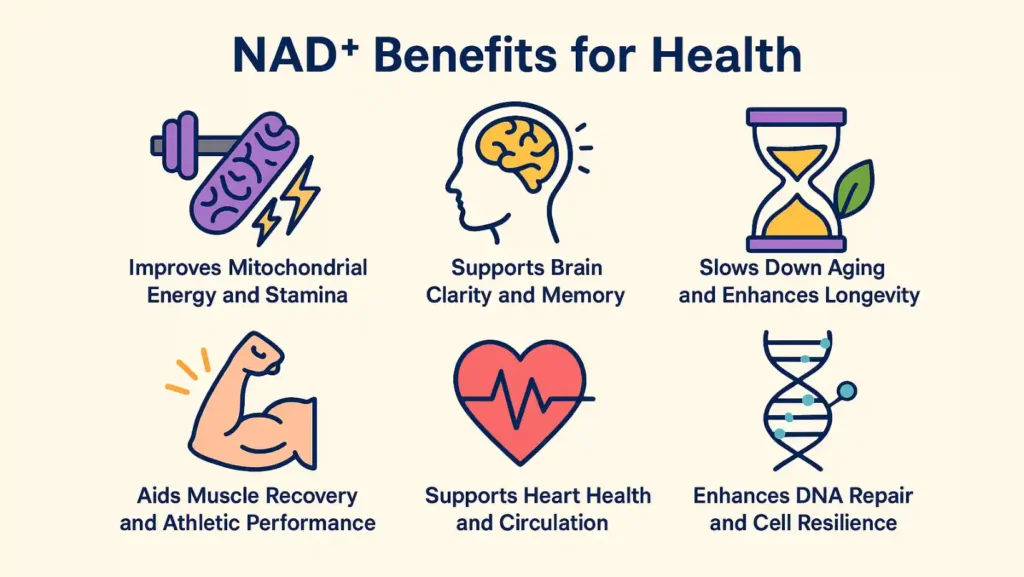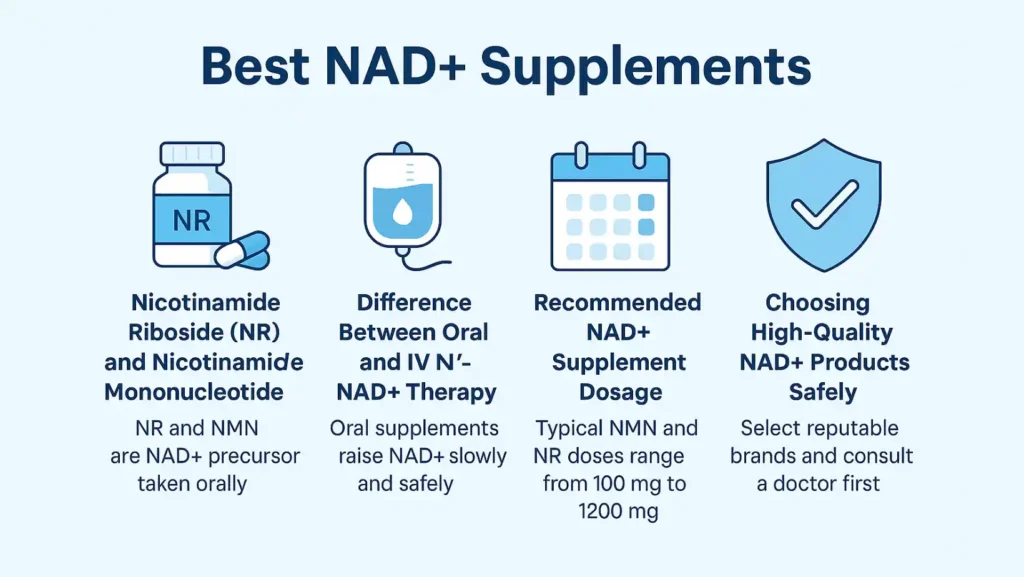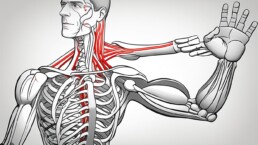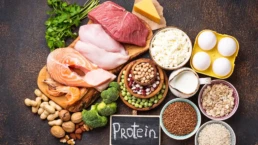NAD+ is a molecule found in every living cell that keeps your body alive and functioning. It drives energy production, DNA repair, brain health, and even how fast you age.
Table of Contents
ToggleWithout enough NAD+, your cells lose power, your body repairs itself more slowly, and fatigue sets in. This single molecule acts like the engine oil of your body; it keeps every system running smoothly.
Understanding how it works and how to boost NAD+ naturally is key to maintaining energy, sharp thinking, and long-term health.
What Is NAD+?
NAD+ stands for nicotinamide adenine dinucleotide. It is a small molecule inside every cell. It moves tiny charged particles called electrons. That movement helps cells make energy. NAD+ also turns on repair tools that fix DNA. When you have enough NAD+, your cells run better and stay healthier.
Cellular Role of NAD+
NAD+ acts like a helper and a switch. It accepts electrons and then gives them away to make energy. This switch also activates enzymes called sirtuins and PARPs. These enzymes control repair, inflammation, and how cells use fuel. Without NAD+, these enzymes stop working well. Cells slow down. You feel tired.
NAD+ vs NADH: What’s the Difference?
NAD+ and NADH are two forms of the same molecule.
- NAD+ picks up electrons and becomes NADH.
- NADH delivers those electrons to mitochondria to make ATP (cellular fuel).
The balance between NAD+ and NADH tells the cell how much energy it has. More NAD+ helps repair. More NADH signals high energy use.
Discovery and Importance in Metabolism
Scientists discovered NAD long ago while studying how cells breathe. Over the decades, they learned that NAD+ is central to metabolism. Newer work links it to aging, immunity, and brain health. That is why researchers test ways to keep NAD+ levels high as you age.
How NAD+ Works in the Body
Energy Production Through Cellular Respiration
Mitochondria are the cell’s power plants. NAD+ hands over electrons to the mitochondria. That flow produces ATP. ATP powers movement, thinking, and repair. Low NAD+ means less ATP. You lose stamina and focus. Regular movement and good sleep help mitochondria and NAD+.
Role in DNA Repair and Anti-Aging Processes
DNA breaks happen daily. Enzymes that fix DNA need NAD+ to work. When NAD+ falls, repair slows. Damaged DNA can build up. That speeds aging signs. Raising NAD+ helps repair systems run better and lowers damage over time.
NAD+ in Brain Function and Nerve Health
Neurons use a lot of energy. NAD+ helps neurons make fuel and resist stress. With better NAD+ you get clearer thinking, sharper memory, and more mental stamina. Studies show NAD+ supports brain cell survival and lowers harmful inflammation in the brain.
Link Between NAD+ and Immune Regulation
Immune cells need NAD+ to act and to calm down when the job is done. Proper NAD+ levels help a balanced immune response. Too little NAD+ can make immune cells overwork or perform poorly. That affects healing and infection control.
Why NAD+ Levels Decline With Age
Natural Decrease in NAD+ After 30 Years Of Age
NAD+ levels naturally go down as you pass early adulthood. Enzymes that break down NAD+ can become more active. The net result is lower NAD+ in many tissues after age 30. This drop links to lower energy and slower repair. Some studies show clear declines, though patterns vary by tissue.
Impact of Oxidative Stress and Poor Sleep
Oxidative stress (cell damage from oxygen) forces repair processes to work more. Those repair processes use NAD+. Poor sleep raises oxidative stress. When you sleep badly, you use more NAD+ and rebuild less. Over time, this lowers your NAD+ pool.
Effect of High-Fat Diets, Alcohol, and Toxins
A high-fat diet and alcohol change how cells handle fat and toxins. The liver and other organs use more NAD+ to clear toxins. That drains NAD+ stores. Long-term exposure makes the decline steady and faster.
How Chronic Diseases Accelerate NAD+ Loss
Chronic inflammation, diabetes, and heart disease make cells work harder. In that state, NAD+ gets used up faster. Disease states often raise enzymes like CD38 that consume NAD+. That speeds decline and worsens symptoms.
NAD+ Benefits for Health
Improves Mitochondrial Energy and Stamina
When NAD+ rises, mitochondria produce more ATP. You will feel more energy during daily tasks and exercise. Muscles recover faster, and you can train harder with less fatigue.
Supports Brain Clarity and Memory
NAD+ supports neuron energy and repair. That helps memory and attention. People may feel less brain fog and better focus when NAD+ improves. Clinical signals show promise, though effects vary by person.
Slows Down Aging and Enhances Longevity
By aiding DNA repair and cell clean-up, NAD+ helps keep tissues young. Animal studies show improved lifespan measures when NAD+ is maintained. Human trials show early positive signs, but more work is needed.
Aids Muscle Recovery and Athletic Performance
NAD+ helps muscle cells repair after stress. That lowers soreness and boosts recovery. Athletes use lifestyle and supplements that raise NAD+ to support training and outcomes.
Supports Heart Health and Circulation
NAD+ helps the cells lining blood vessels. Healthy vessel cells keep arteries flexible and narrow properly. This supports blood pressure and blood flow. Studies link NAD+ pathways to better cardiac function.
Enhances DNA Repair and Cell Resilience
NAD+ fuels enzymes that fix broken DNA and remove bad proteins. That keeps cells resilient. With enough NAD+, you limit the build-up of cellular damage that ages tissues.
Best NAD+ Supplements
Nicotinamide Riboside (NR) and Nicotinamide Mononucleotide (NMN)
NR and NMN are two common precursors you can take by mouth. Your body turns NR into NMN and then into NAD+. Both raise blood and tissue NAD+ in studies. NR has a body of safety data in humans. NMN also shows benefits, but has more regulatory questions in some countries..
Difference Between Oral and IV NAD+ Therapy
Oral supplements raise NAD+ slowly and safely. Intravenous NAD+ can raise blood levels fast. IV may feel quicker, but it carries more medical risk. Oral routes give steady, long-term improvement. Choose oral for safety unless a physician advises otherwise.
Recommended NAD+ Supplement Dosage
Research uses a wide dose range. NR doses from 100 mg to 3000 mg per day appear in trials. NMN doses often range from 250 mg to 1200 mg. Start low and follow the manufacturer’s and doctor’s guidance. High doses need medical supervision.
Choosing High-Quality NAD+ Products Safely
Pick brands with third-party testing and transparent labels. Check for purity reports and clear ingredient lists. Avoid unknown sellers online. If you have health issues or take medicines, consult your doctor before starting supplements.
How to Boost NAD+ Naturally
Exercise and Calorie Restriction
Regular aerobic and resistance exercise raises enzymes that support NAD+ recycling. Short, safe calorie reduction or time-limited low-energy periods can stimulate the same pathways. These habits raise your NAD+ without pills.
Intermittent Fasting and Sleep Optimization
Intermittent fasting changes metabolism to favor repair and NAD+ recycling. Good sleep helps repair systems and conserves NAD+. Aim for regular sleep times and sufficient duration to support your NAD+ levels.
Eating Niacin-Rich Foods (Fish, Peanuts, Mushrooms)
Niacin (vitamin B3) and related B vitamins give raw materials for NAD+. Eat fish, peanuts, mushrooms, lean meats, and whole grains to support your NAD+ supply. These foods help your body make NAD+ naturally.
Cold Exposure and Red-Light Therapy
Controlled cold exposure can activate metabolic pathways that support NAD+ production and resilience. Red-light therapy acts on mitochondria and may support energy output. Use both methods gradually and safely.
NAD+ Decline and Aging: The Scientific Link
How Low NAD+ Triggers Cell Dysfunction
Low NAD+ reduces sirtuin and PARP activity. That weakens repair and stress responses. Cells accumulate damage and lose function. Tissues age faster and lose strength.
Role in Mitochondrial Decline and Fatigue
Without enough NAD+, mitochondria slow down. ATP drops and fatigue rises. You lose stamina and mental clarity. Boosting NAD+ supports mitochondrial function and reduces tiredness.
Can NAD+ Restoration Reverse Aging Markers?
In animals, raising NAD+ reversed some aging signs. Human studies show improvements in metabolic markers and function. The data are promising but not conclusive for full anti-aging reversal. Longer trials are needed.
NAD+ and Brain Health
How NAD+ Supports Neuron Protection
NAD+ activates enzymes that protect neurons from stress and inflammation. This helps neurons survive and maintain function. Adequate NAD+ supports mood, focus, and learning.
NAD+ and Memory Performance With Age
Higher NAD+ in animal models improves learning and memory. Early human results suggest better attention and memory with NAD+ precursors. Individual responses vary.
Role in Neurodegenerative Disease Prevention
Researchers test NAD+ as a tool against Alzheimer’s and Parkinson’s. Early results show protective trends. More human trials are underway to confirm the preventive benefit.
NAD+ and Cardiovascular Health
Improves Blood Vessel Elasticity
NAD+ supports the lining of blood vessels, improving flexibility. Flexible vessels handle blood flow and pressure better. This lowers stress on the heart.
Helps Regulate Blood Pressure and Lipids
NAD+ pathways help control how the body handles fats and blood pressure. Improving NAD+ may aid lipid balance and blood pressure regulation.
Role of NAD+ in Preventing Heart Inflammation
NAD+ supports anti-inflammatory enzymes. That reduces chronic inflammation around vessels and heart tissue. Lower inflammation helps prevent damage and disease.
Side Effects and Precautions
Possible Mild Side Effects (Nausea, Headache)
Short-term side effects of NR or NMN may include mild nausea or headache. Most people tolerate standard doses well. If side effects persist, stop and consult your doctor.
Interactions With Medications Or Supplements
NAD+ boosters can interact with drugs for blood pressure or diabetes. They may also affect cancer therapies. Always tell your clinician before starting NAD+ supplements.
Who Should Avoid High-Dose NAD+ Boosters
People with active cancer, pregnant or breastfeeding persons, and some with autoimmune disease should avoid high doses. Seek medical clearance first.
Research and Future of NAD+ Therapy
NAD+ in Longevity and Anti-Aging Medicine
NAD+ is a focus of longevity research. Scientists test how NAD+ affects lifespan and disease speed. Early trials show promise for metabolic and functional health.
Ongoing Studies on Cancer, Alzheimer’s, and Diabetes
Trials test NAD+ approaches in cancer care, Alzheimer’s prevention, and diabetes control. Results will guide safe use and patient selection.
Emerging Delivery Systems for NAD+ Restoration
New delivery forms aim to raise NAD+ more efficiently. These include stabilized precursors, targeted molecules, and medical infusions. Safety and long-term benefits remain under study.
FAQs
Does NAD+ Really Decline With Age?
Yes. NAD+ often falls with age in many tissues. This decline is tied to lower repair and energy. The pattern varies by tissue and person, but shows real age links.
What’s The Difference Between NAD+ And NMN?
NAD+ is the active molecule. NMN is a precursor that converts into NAD+ inside cells. NMN supplements aim to raise NAD+ levels safely over time.
Which Is Better — NAD+ Injection Or Oral Supplement?
Oral supplements give a steady, safer rise in NAD+. IV provides a fast spike but more risk. Most people should try oral methods with medical guidance.
How Does NAD+ Help With Aging And Energy?
NAD+ fuels mitochondria and repair enzymes. This reduces damage and increases ATP. The result is more daily energy and slower tissue decline.
What Foods Help Increase NAD+ Levels Naturally?
Eat niacin-rich foods such as fish, peanuts, mushrooms, lean meats, and whole grains. These foods give the raw materials your body needs to make NAD+ naturally.
Can Exercise Restore NAD+ Levels?
Yes. Exercise boosts enzymes that recycle NAD+ and supports mitochondria. Regular activity helps raise and maintain NAD+ over weeks and months.
Is NAD+ Therapy Effective For Brain Fog And Fatigue?
Some people feel less brain fog and more energy after NAD+ support. Results vary by person, cause of symptoms, and method used. Clinical evidence is growing.
How Long Does It Take To Feel NAD+ Benefits?
You may feel small changes in weeks. Full benefits often take months with consistent supplements or lifestyle changes. Response times vary by person and dose.
Are There Any Risks With Long-Term NAD+ Use?
Long-term safety data are limited. Short-term use appears safe for many, but people with cancer or certain conditions need medical advice first. Monitor any long-term plan with a clinician.

This article is medically reviewed by Dr. Nivedita Pandey, Senior Gastroenterologist and Hepatologist, ensuring accurate and reliable health information.
Dr. Nivedita Pandey is a U.S.-trained gastroenterologist specializing in pre and post-liver transplant care, as well as managing chronic gastrointestinal disorders. Known for her compassionate and patient-centered approach, Dr. Pandey is dedicated to delivering the highest quality of care to each patient.










